How to optimise orchid growth and other CAM plants
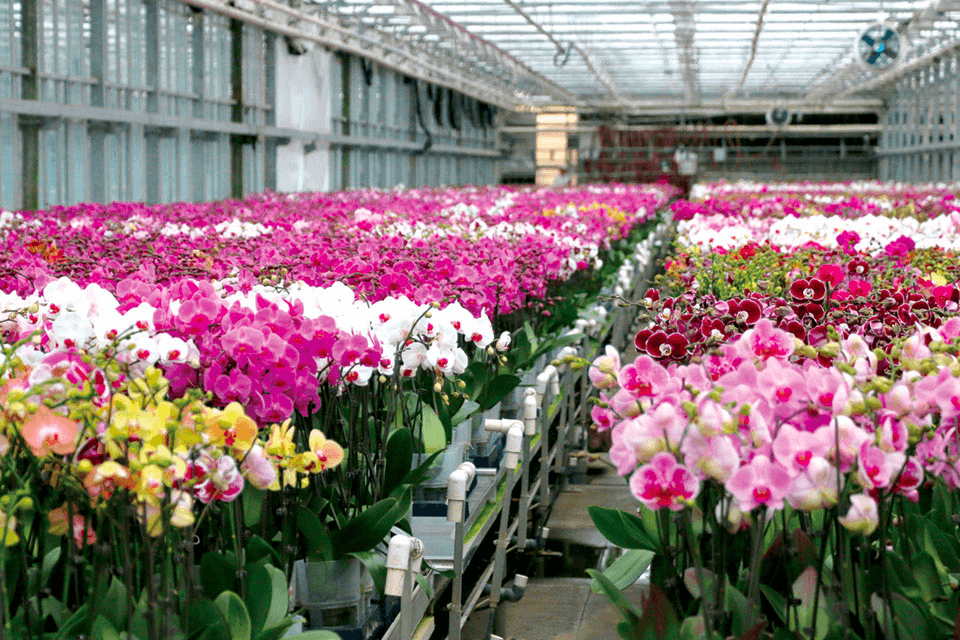
Image Credit: Greenhouse Grower
October 2023
CAM plants have a distinct photosynthetic process that both sets them apart from typical C3 and C4 plants, presenting a unique challenge to greenhouse growers to manage their climate.
Crassulacean Acid Metabolism (CAM) is a specialised form of photosynthesis observed in several plants, especially those in arid regions. Unlike the continuous uptake CO2 seen in most plants, CAM plants have a nocturnal routine. They open their stomata at night, absorbing CO2 and storing it as a compound called malate. When daylight arrives, these plants close their stomata to prevent water loss and use the stored CO2 for photosynthesis.
At the start of the day, the photosynthetic behaviour of CAM plants is much the same as any other plant. However, under the hood, the plant is using up its stored CO2 and once this reservoir is depleted, the efficiency of photosynthesis decreases dramatically.
The reason for this seemingly strange behaviour arises from the arid natural habitats of CAM plants where water conservation is paramount. By closing their stomata during the day, CAM plants reduce evapotranspiration and thereby water loss. However, this water-saving adaptation comes at the cost of limited daytime photosynthesis when the CO2 store runs out.
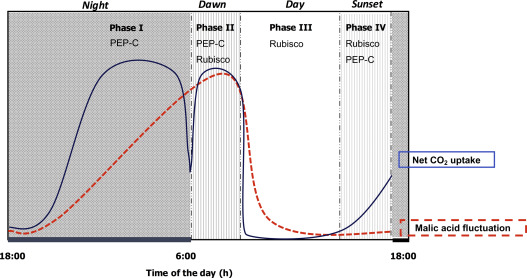
Image Credit: Science Direct - Phases of CAM carbon fixation pathways.
Once the CO2 store has been depleted, the plant's ability to convert sunlight into energy is significantly reduced. Without changes to the greenhouse climate, the plant will begin to experience stress.
To maintain optimal control of the CAM plant environment, growers can take certain measures. They can increase shading to prevent photo-damage and turn off supplemental LED lighting, as the plant becomes less efficient in processing incoming light. Additionally, growers often increase the concentration of CO2 in the atmosphere to compensate for the low CO2 concentration within the plant. These actions help support the plant's photosynthetic mechanism even after the CO2 store has been exhausted.
However, it is challenging for growers to determine the exact moment when the CO2 store runs out. This timing varies by several hours each day, depending on the greenhouse climate experienced by the plants. In winter, the plant may not fully deplete its CO2 capacity, requiring additional lighting for optimal functioning. Lastly, understanding the rate at which the CO2 store is depleting can assist growers in controlling temperature, irrigation, and daily light integral, in order to prolong the CO2 store as much as possible.
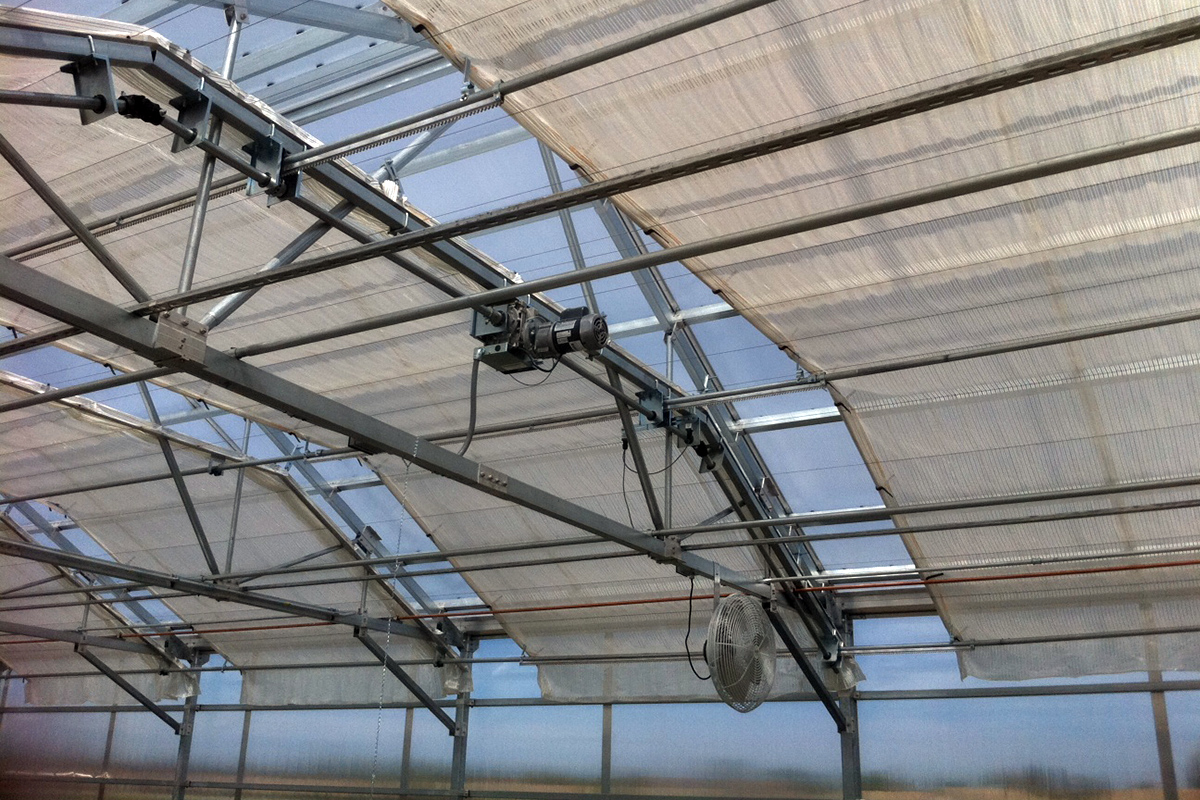
Image Credit: Stuppy Greenhouse
Chlorophyll fluorescence is a useful tool for monitoring the photosynthetic efficiency of plants. Non-photochemical quenching (NPQ) is a mechanism that plants use to safely dissipate excess absorbed light energy. Elevated NPQ levels can indicate stress conditions, such as suboptimal CO2 availability under high light, and may reflect a strategy to protect against potential photodamage.
In the case of phalaenopsis plants, chlorophyll fluorescence measurements typically show a rapid increase in non-photochemical quenching in the afternoon. This occurs as the plant's CO2 supply is depleted and it is unable to convert light into sugars. Instead, the excess energy is dissipated as heat. A similar dramatic decline is observed in the maximum efficiency of photosynthesis (Fv'/Fm'), which is inversely proportional to the amount of non-photochemical quenching.
The graph below displays measurements taken with the Gardin sensor in a commercial orchid greenhouse. It shows the average NPQ and Fv'/Fm' values for each hour, averaged across multiple days. The sensor effectively determines the precise time at which the CO2 supply is exhausted and the plant's light use efficiency decreases. In the late afternoon, growers typically apply increased shading to the plants, resulting in lower light intensity. This causes the NPQ to return to normal levels, and the plant can then absorb higher concentrations of CO2.
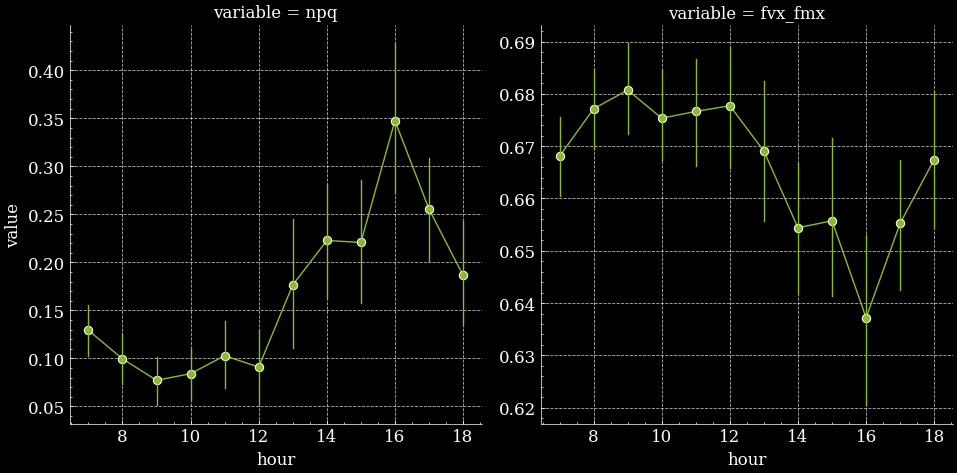
Image Credit: Gardin
Unfortunately, it is not as simple as finding a single hour when the plant runs out of CO2, as this will vary daily depending on the greenhouse climate. The graph below displays NPQ and Fv'/Fm' for different days, revealing distinct behaviour in the plant. Therefore, a solution is required to continuously measure crops each day in order to determine the optimal control of shading, CO2, and lighting.
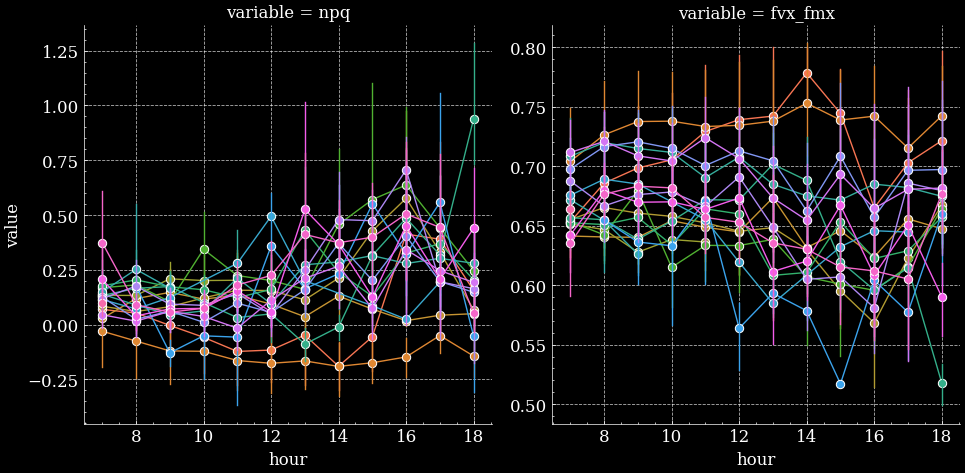
Image Credit: Gardin
By utilising real-time data on plant photosynthesis, CAM plant growers can make climate decisions based on the plant itself rather than relying solely on environmental factors. This approach can lead to significant improvements in crop outcomes, including yield and quality. However, in order to automate any aspect of greenhouse climate control, it is crucial for growers to have confidence that the plant data accurately represents the entire greenhouse.
This means that measurements should not be taken from a single plant's leaf. To address this limitation in plant-driven growing, Gardin has developed an autonomous sensor capable of measuring hundreds of leaves every hour. By deploying a few sensors per hectare, growers can now measure the photosynthetic activity of thousands of leaves daily, without requiring any manual labor. This abundance of data empowers growers to make climate control decisions based on plant measurements, such as automated shading control for phalaenopsis plants.

Image Credit: Gardin
Gardin offers a groundbreaking and innovative solution designed specifically for CAM plant growers. With our advanced technology, growers can effectively address the challenge of optimising photosynthetic efficiency with an enhanced climate control strategy. Don't miss out on this opportunity to elevate your plant-driven growing to the next level.
Contact us today to schedule a demo and see the remarkable benefits of Gardin for yourself!